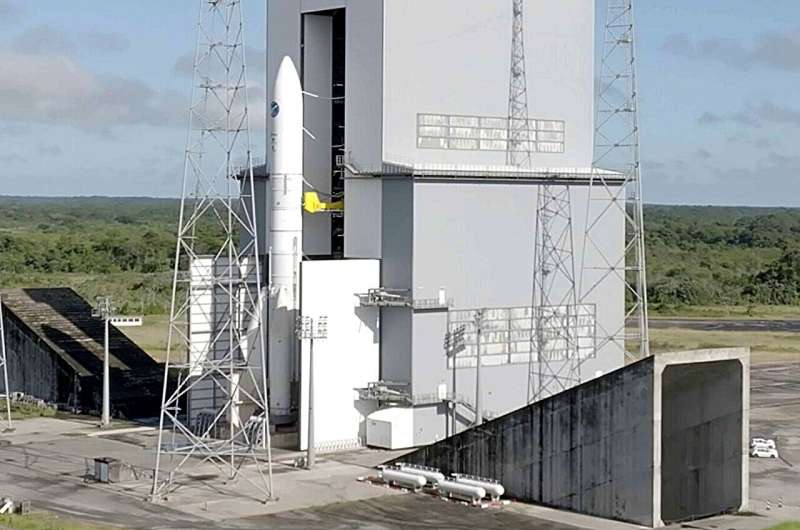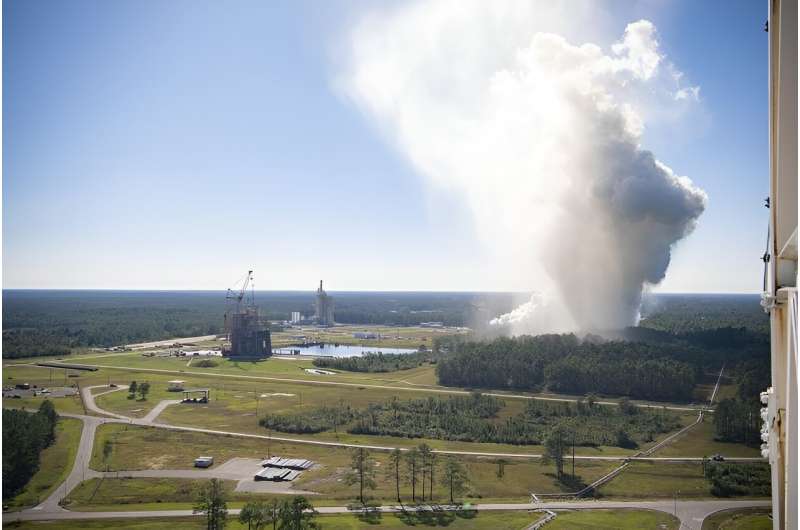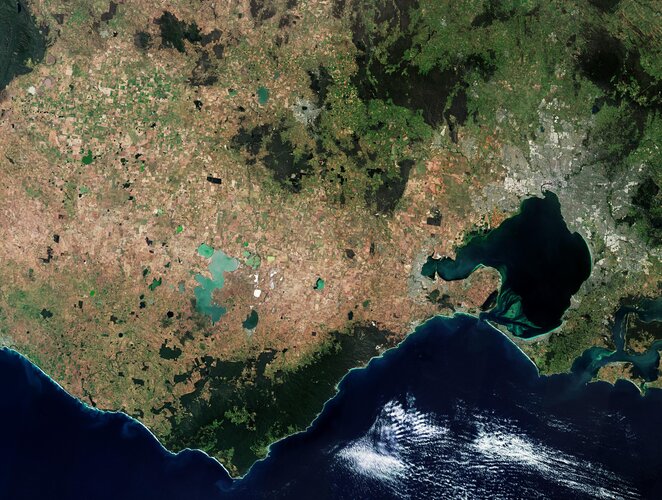D-Orbit and Plan-S Forge Strategic Partnership for Satellite Deployment
Friday, 05 April 2024 19:58 In a significant step towards enhancing global IoT connectivity and Earth Observation, D-Orbit has sealed a launch agreement with Turkish New Space pioneer, Plan-S. The partnership entails the deployment of eight 6U satellites across two missions scheduled between late 2024 and early 2025, utilizing D-Orbit's ION Satellite Carrier for effective constellation placement.
Matteo Lorenzoni, D-
In a significant step towards enhancing global IoT connectivity and Earth Observation, D-Orbit has sealed a launch agreement with Turkish New Space pioneer, Plan-S. The partnership entails the deployment of eight 6U satellites across two missions scheduled between late 2024 and early 2025, utilizing D-Orbit's ION Satellite Carrier for effective constellation placement.
Matteo Lorenzoni, D- Muon Space Launches Muon Halo, Securing Over $60M for LEO Satellite Missions
Friday, 05 April 2024 19:58 Muon Space, a leader in space systems, today unveiled Muon Halo, a comprehensive solution designed to enhance the deployment and performance of low Earth orbit (LEO) small satellite constellations. This integrated hardware and software suite aims to streamline mission processes, from design to operation, ensuring quicker launches and improved functionality in space.
The company also disclo
Muon Space, a leader in space systems, today unveiled Muon Halo, a comprehensive solution designed to enhance the deployment and performance of low Earth orbit (LEO) small satellite constellations. This integrated hardware and software suite aims to streamline mission processes, from design to operation, ensuring quicker launches and improved functionality in space.
The company also disclo Sidus Space Launches Commercial Mission Control Center Services
Friday, 05 April 2024 19:58 Sidus Space, Inc. (NASDAQ: SIDU), known for its innovative Space and Data-as-a-Service satellite solutions, has announced the launch of its Mission Control Center (MCC), a new addition aimed at enriching its Space-Based Data Solutions segment. This initiative aligns with Sidus' commitment to expanding its revenue streams by catering to commercial enterprises.
Operating under four key divis
Sidus Space, Inc. (NASDAQ: SIDU), known for its innovative Space and Data-as-a-Service satellite solutions, has announced the launch of its Mission Control Center (MCC), a new addition aimed at enriching its Space-Based Data Solutions segment. This initiative aligns with Sidus' commitment to expanding its revenue streams by catering to commercial enterprises.
Operating under four key divis Tyvak International wins EDA contract to develop VLEO satellite technology
Friday, 05 April 2024 19:58 Tyvak International SRL, a subsidiary of Terran Orbital Corporation (NYSE: LLAP) located in Torino, Italy, announced its role in a major European Defense Agency (EDA) initiative. As a leading European nano and microsatellite provider, Tyvak International has been awarded a service subcontract for the EDA's Hub for EU Defense Innovation (HEDI) proof-of-concept prototype for 2023. This project foc
Tyvak International SRL, a subsidiary of Terran Orbital Corporation (NYSE: LLAP) located in Torino, Italy, announced its role in a major European Defense Agency (EDA) initiative. As a leading European nano and microsatellite provider, Tyvak International has been awarded a service subcontract for the EDA's Hub for EU Defense Innovation (HEDI) proof-of-concept prototype for 2023. This project foc Looking back at Hinman Col: Sols 4146-4147
Friday, 05 April 2024 19:58 Earth planning day: Wednesday, April 3, 2024: Today we planned a Touch and Go plan. Our workspace had abundant large, stable blocks - not always a given! - which made for a relatively easy planning process for the geology and mineralogy theme group (GEO).
The bedrock here is predominantly a pale coloured rock, massive (non-lineated) in appearance, but there are rare fragments of darker lay
Earth planning day: Wednesday, April 3, 2024: Today we planned a Touch and Go plan. Our workspace had abundant large, stable blocks - not always a given! - which made for a relatively easy planning process for the geology and mineralogy theme group (GEO).
The bedrock here is predominantly a pale coloured rock, massive (non-lineated) in appearance, but there are rare fragments of darker lay Kinematics launches advanced satellite ground station positioners
Friday, 05 April 2024 19:58 Kinematics, a leader in intelligent motion systems, has unveiled its latest ground station positioner innovations, the Kinematics KX-6 2.4M class Low Earth Orbit (LEO) positioner, and the KX-3 1M class user terminal positioner, marking a significant leap forward in satellite positioning technology.
The KX-6 Positioner, an advanced 2.4-meter class X-Y zero-backlash system, is engineered for
Kinematics, a leader in intelligent motion systems, has unveiled its latest ground station positioner innovations, the Kinematics KX-6 2.4M class Low Earth Orbit (LEO) positioner, and the KX-3 1M class user terminal positioner, marking a significant leap forward in satellite positioning technology.
The KX-6 Positioner, an advanced 2.4-meter class X-Y zero-backlash system, is engineered for Iridium acquires Satelles, Unveils enhanced time and location solutions
Friday, 05 April 2024 19:58 Iridium Communications Inc. (NASDAQ: IRDM) has finalized the purchase of Satelles, Inc., stepping into a leading role in the provision of secure satellite-based time and location services. This strategic move introduces Iridium Satellite Time and Location (STL), a new addition to Iridium's comprehensive suite of communication solutions. The acquisition signifies Iridium's commitment to enhancing
Iridium Communications Inc. (NASDAQ: IRDM) has finalized the purchase of Satelles, Inc., stepping into a leading role in the provision of secure satellite-based time and location services. This strategic move introduces Iridium Satellite Time and Location (STL), a new addition to Iridium's comprehensive suite of communication solutions. The acquisition signifies Iridium's commitment to enhancing Video: Ariane 6 passes tests in preparation for first flight
Friday, 05 April 2024 15:51
Europe's next rocket, Ariane 6, passed all its qualification tests in preparation for its first flight, and the full-scale test model has been removed from the launch pad to make way for the real rocket that will ascend to space.
The test model at Europe's Spaceport in Kourou, French Guiana, stood 62 m high. It is exactly the same as the "production model" Ariane 6 rockets that will soon be launched, except that its boosters do not need to be tested as part of the complete rocket, so the boosters are not fueled.
Teams preparing Ariane 6 for its inaugural flight successfully completed for the first time a launcher preparation and countdown sequence, on 18 July. Representatives of ESA, Ariane 6 prime contractor ArianeGroup and launch base prime contractor and test conductor CNES completed important objectives for system qualification and performed a series of actions fully representative of a launch chronology.
The launch simulation included the removal of the mobile gantry, the chill-down of ground and launcher fluidic systems, the filling of the upper and core stage tanks with liquid hydrogen (–253°C) and liquid oxygen (–183°C), and at the end of the test, the successful completion of a launch chronology up to the ignition of the Vulcain 2.1 engine thrust chamber by the ground system.
NASA achieves milestone for engines to power future Artemis missions
Friday, 05 April 2024 14:20
NASA achieved a major milestone April 3 for production of new RS-25 engines to help power its Artemis campaign to the moon and beyond with completion of a critical engine certification test series at NASA's Stennis Space Center near Bay St.
Week in images: 01-05 April 2024
Friday, 05 April 2024 12:10
Week in images: 01-05 April 2024
Discover our week through the lens
Virgin Galactic countersues Boeing about mothership project
Friday, 05 April 2024 08:35

A stellar role for ESA
Friday, 05 April 2024 08:30
Launched on 21 February 2024 on Apple TV+, new original series Constellation has gripped viewers with its mix of sci-fi and mind-bending mystery.






